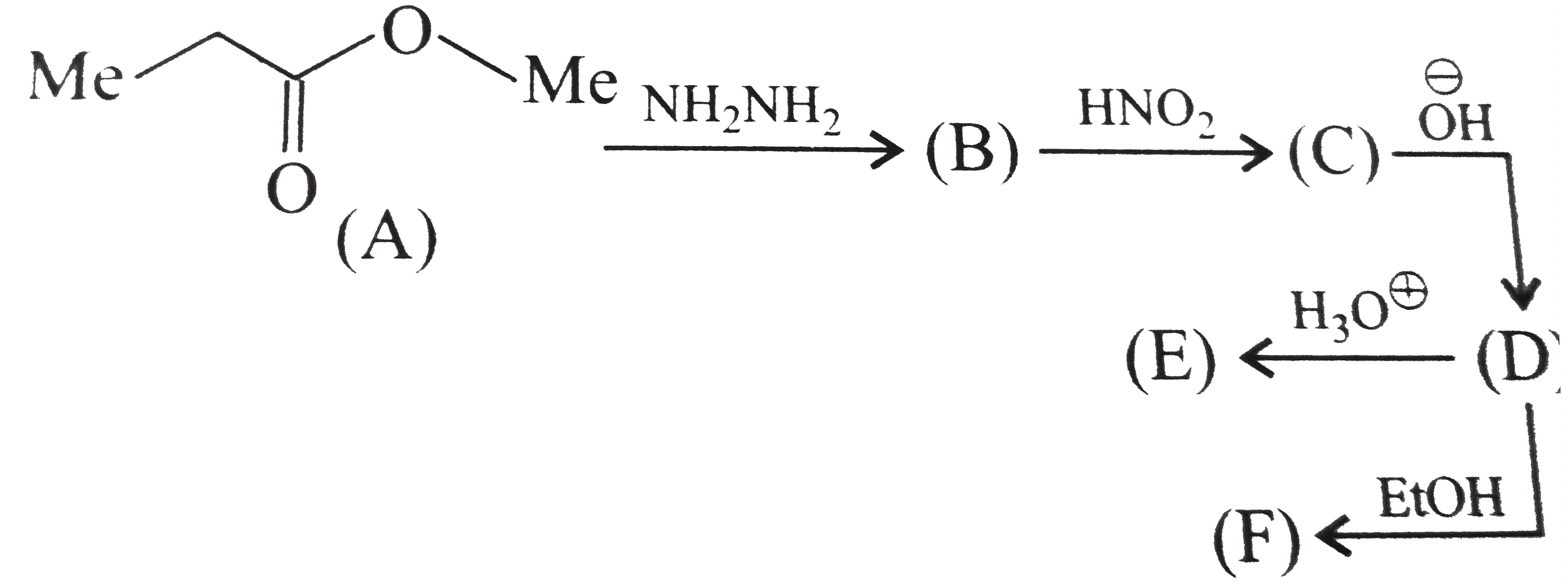(a) Optically active compound (A) with a pleasant smell has a saponification equivalent (S.E)=186. If shows the following reaction.
(i) (A)Br2−−→CCl4NO reaction
(ii) (A)−−−→H3O⊕(B)and(C)Soluble inNaOH
Both (B) and (C) are chiral.
(iii) (C)I2+ӨOH−−−−→ Positive test
(iv) (C)Conc.−−−→H2SO4(D) (No diastereomers)
(v) Ag salt of (B)Br2−−→(±)(E)
(vi) (C)TsCl−−→NaBr−−→(E)(Chiral)
Identify (A) to (E)
(b) How do the structures of (A) to (E) change if
(i) (D) exists as diasteremers.
(ii) (C) gives negative iodoform test.
Video Solution
Text Solution
(a) (i) (A) is an ester since esters have a pleasant smell.
(ii) (A) does not react with Br2∣CCl4 rArr Saturated ester.
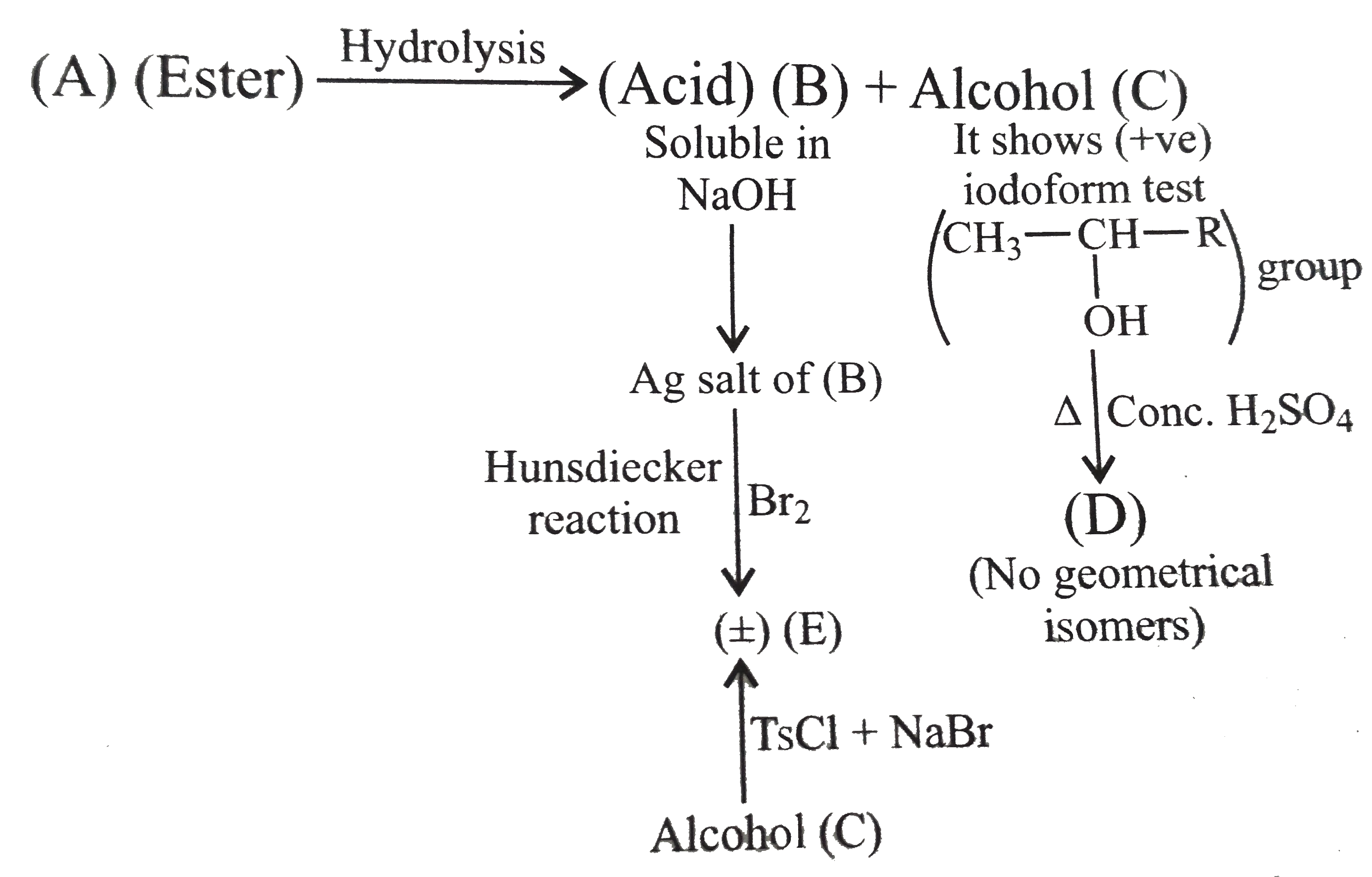
(iii) General formula of ester : (RCOOR).
(S.E=Mw=186)
Number of C atom =Mw− Mass of 20 atoms14
=186−3214=11
(∵Mass ofCH2=14)
Therefore, the molecular formula of ester is C11H22O2.
(iv) Acid (B) must have one more C atom than alcohol (C) because (B) on Hunsdiecker reaction loses one C atom to give (E).(E) is also obtained from (C) with not change in C atom.
(v) Alcohol (C) of the type ⎛⎜
⎜⎝CH3−CH∣OH−R⎞⎟
⎟⎠ on dehydration with conc.H2SO4 gives alkene of the type  (since it does not show diastereomers).
(since it does not show diastereomers).
(vi) Alcohol (C) contains five C atoms, so acid (B) must contain six C atoms.
(vii) The structure of alcohol (C) must be ⎛⎜
⎜⎝CH3−∗CH∣OH−CH3∣CH−CH3⎞⎟
⎟⎠ and it is optically active.
(viii) Alcohol (C)TsCl+NaBr−−−−−−−→(E)
It suggests that skeleton of (B) and (C) should be the same.
(ix) The structure of acid (B) and alcohol (C) should be of the type :
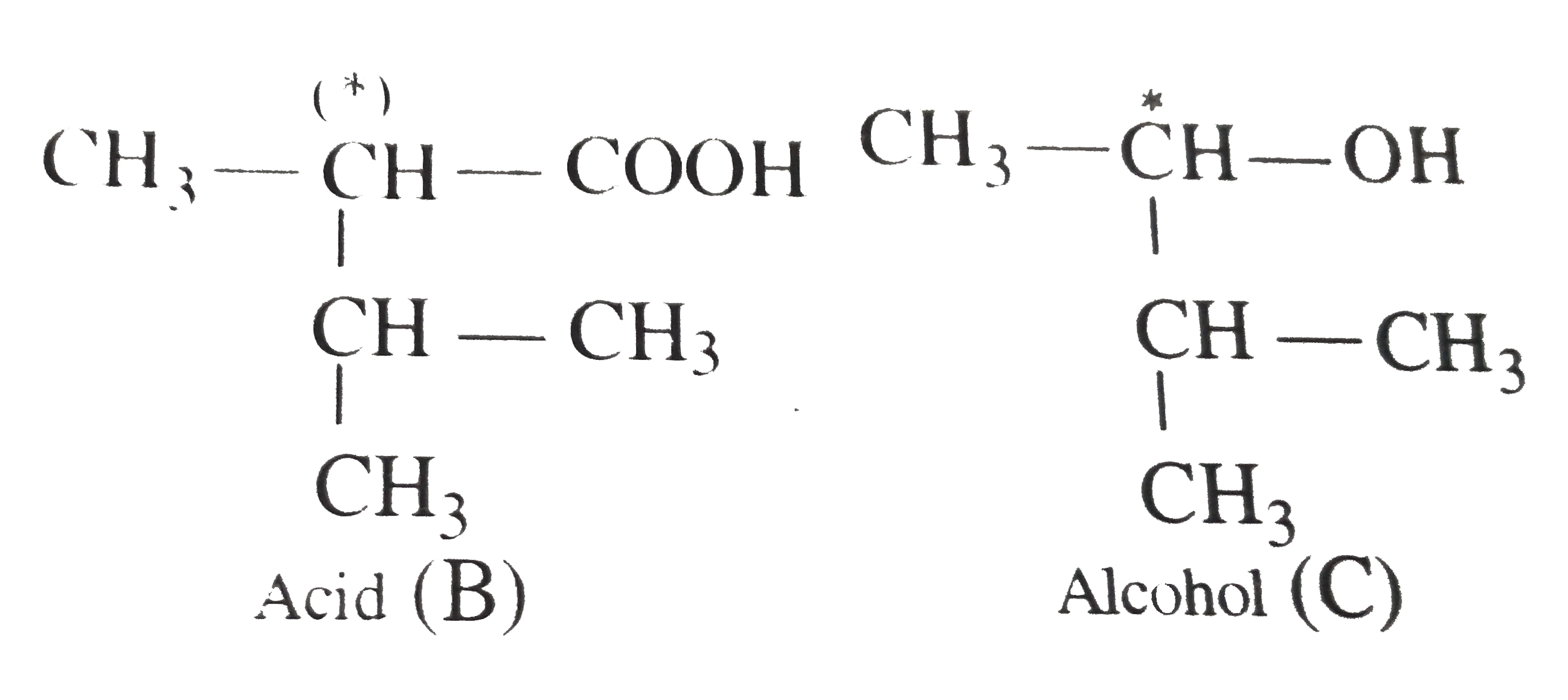
(x) Therefore, the structure of ester (A) would be :
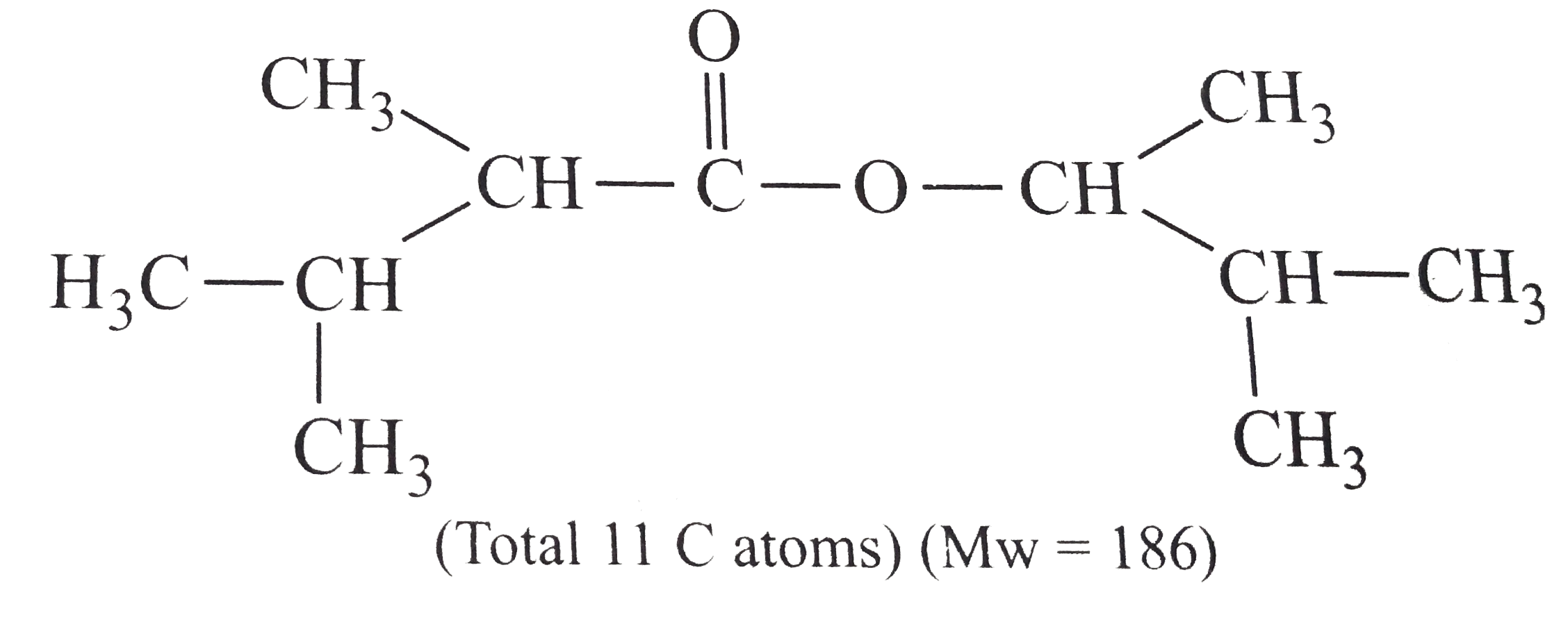
Reactions :

(TsCl refers to p-tolulyl sulphonyl chloride, 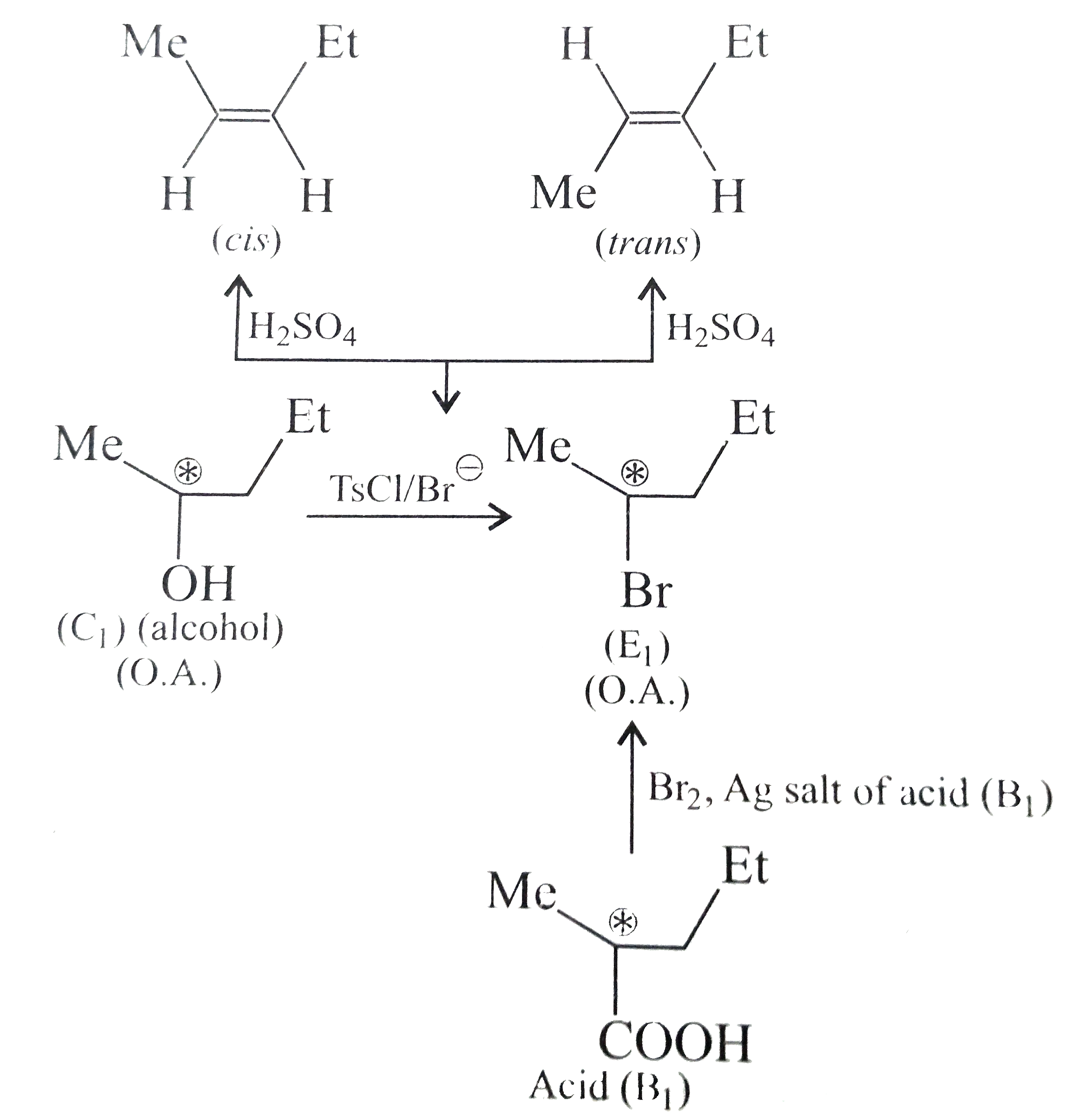 .
.
(b) (i) If (D) exists as diastereomer (i.e. geometrical isomers), then we have
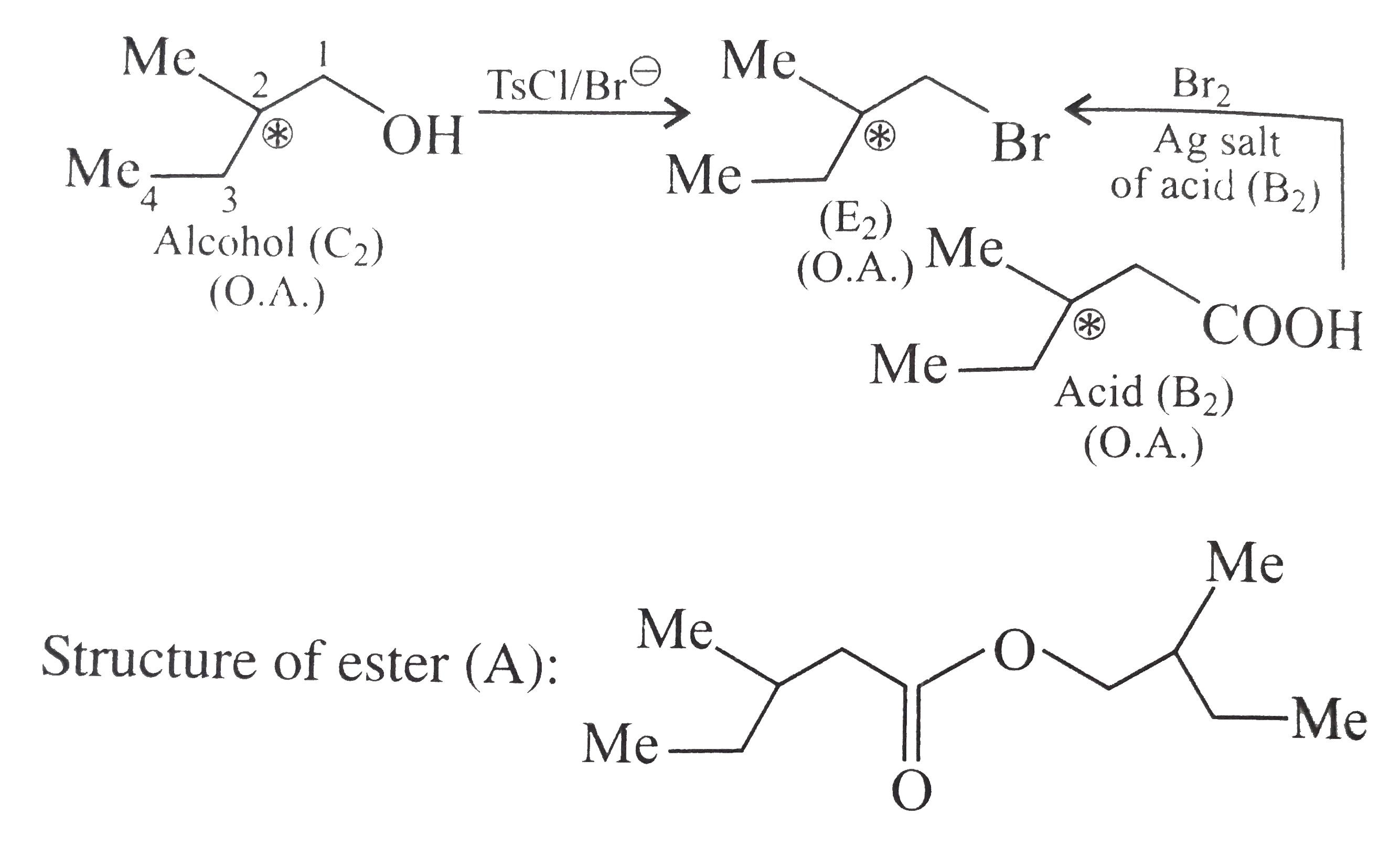
(ii) If alcohol (C) is chiral and gives negative iodoform test, then (C) would be :
⎛⎜
⎜⎝Ho−1CH2−2CH∣CH3−3CH2−4CH3⎞⎟
⎟⎠
Reactions :
Structure of ester (A) :
|
Topper's Solved these Questions
- CARBOXYLIC ACIDS AND THEIR DERIVATIVESBOOK - CENGAGE CHEMISTRYCHAPTER - CARBOXYLIC ACIDS AND THEIR DERIVATIVESEXERCISE - Exercises (Linked Comprehension)
34 Videos
- CARBOXYLIC ACIDS AND THEIR DERIVATIVESBOOK - CENGAGE CHEMISTRYCHAPTER - CARBOXYLIC ACIDS AND THEIR DERIVATIVESEXERCISE - Exercises (Multiple Correct)
35 Videos
- CARBOXYLIC ACIDS AND THEIR DERIVATIVESBOOK - CENGAGE CHEMISTRYCHAPTER - CARBOXYLIC ACIDS AND THEIR DERIVATIVESEXERCISE - Solved Examples
17 Videos
- BIOMOLECULES, POLYMERS AND CHEMISTRY IN EVERYDAY LIFEBOOK - CENGAGE CHEMISTRYCHAPTER - BIOMOLECULES, POLYMERS AND CHEMISTRY IN EVERYDAY LIFEEXERCISE - QUESTION BANK
8 Videos
- CHEMICAL KINETICSBOOK - CENGAGE CHEMISTRYCHAPTER - CHEMICAL KINETICSEXERCISE - Archives Subjective
23 Videos
Similar Questions
Knowledge Check
H3C−O∣∣C−COOH(i)NH3−−−−−−→(ii)H2/Pd(A). Identify (A)
ACH3CONH2BH3C−O∣∣C−CONH2CCH3CH2CONH2DCH3CH(NH2)COOHThe end product (C) of the following sequence of reaction is :
CH≡CH+MeMgBr(1mol)→(A)(i)CO2−−−−−−→(ii)H3O⊕(B)HgSO4/H2SO4−−−−−−−−−→(C).A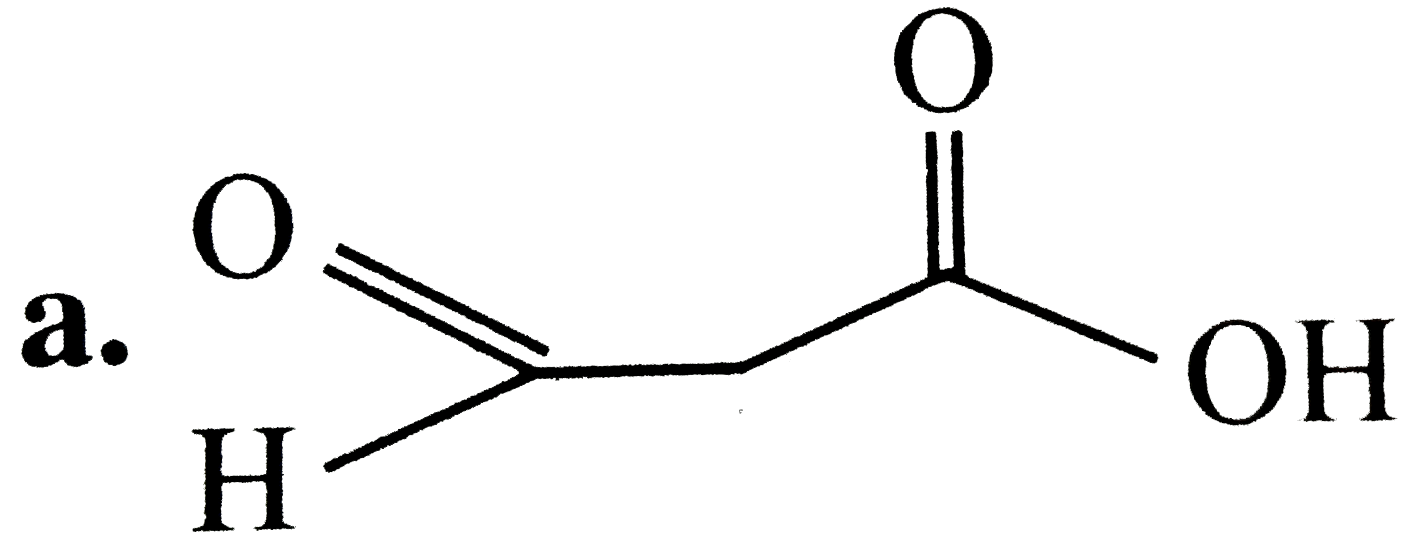 B
B C
C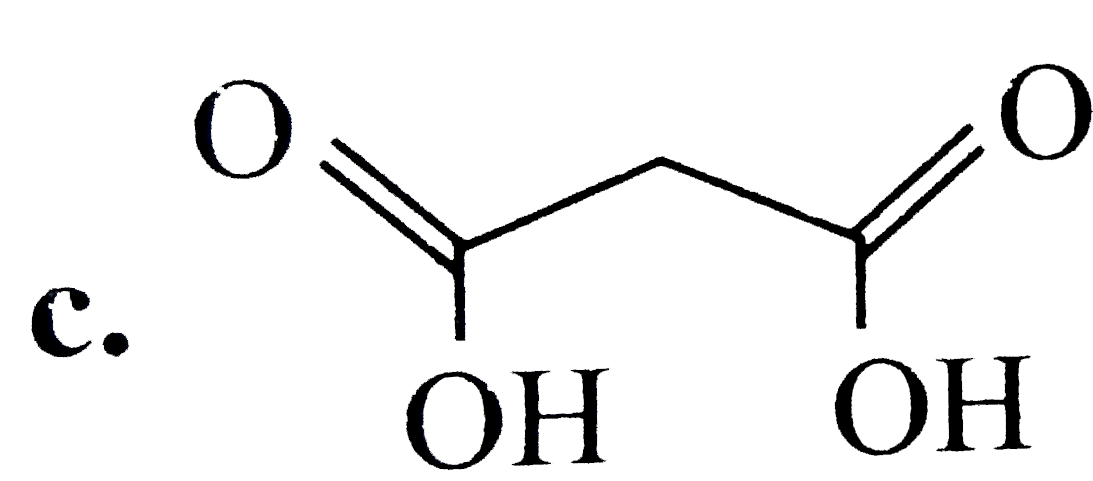 D
D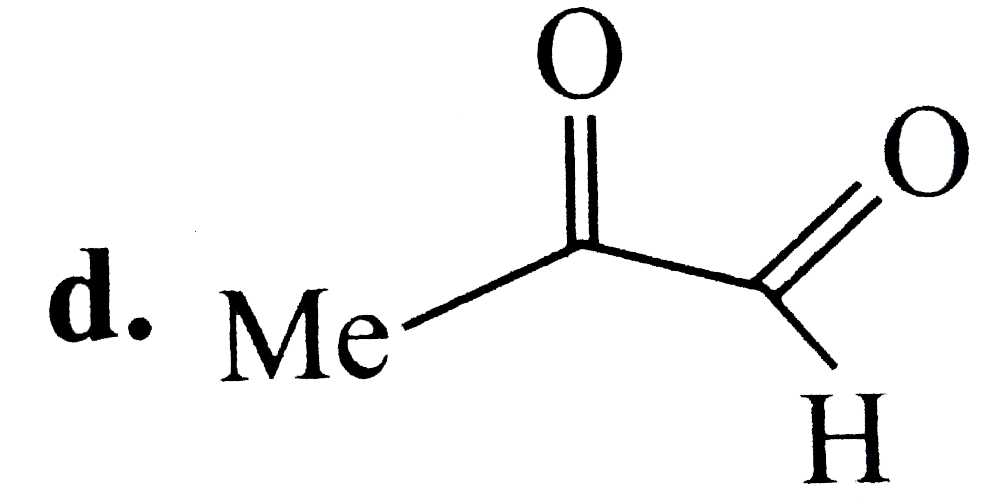
Cl−OH∣C−OEtPhMgBr(excess)−−−−−−−−−−→H⊕3O Product :
APh−OH∣C∣Ph−PhBPh−O∣∣C−ClCPh−O∣∣C−OEtDPh−O∣∣C−Ph
Identify the product in following reaction
CH3−CH3∣C=C∣H−CH3D2O/D⊕−−−−−→
View SolutionComplete the following reactions
a. PhNH2(A)HNO2−−−→0.5∘C(B)−−−−→DH2PO2(C)
b.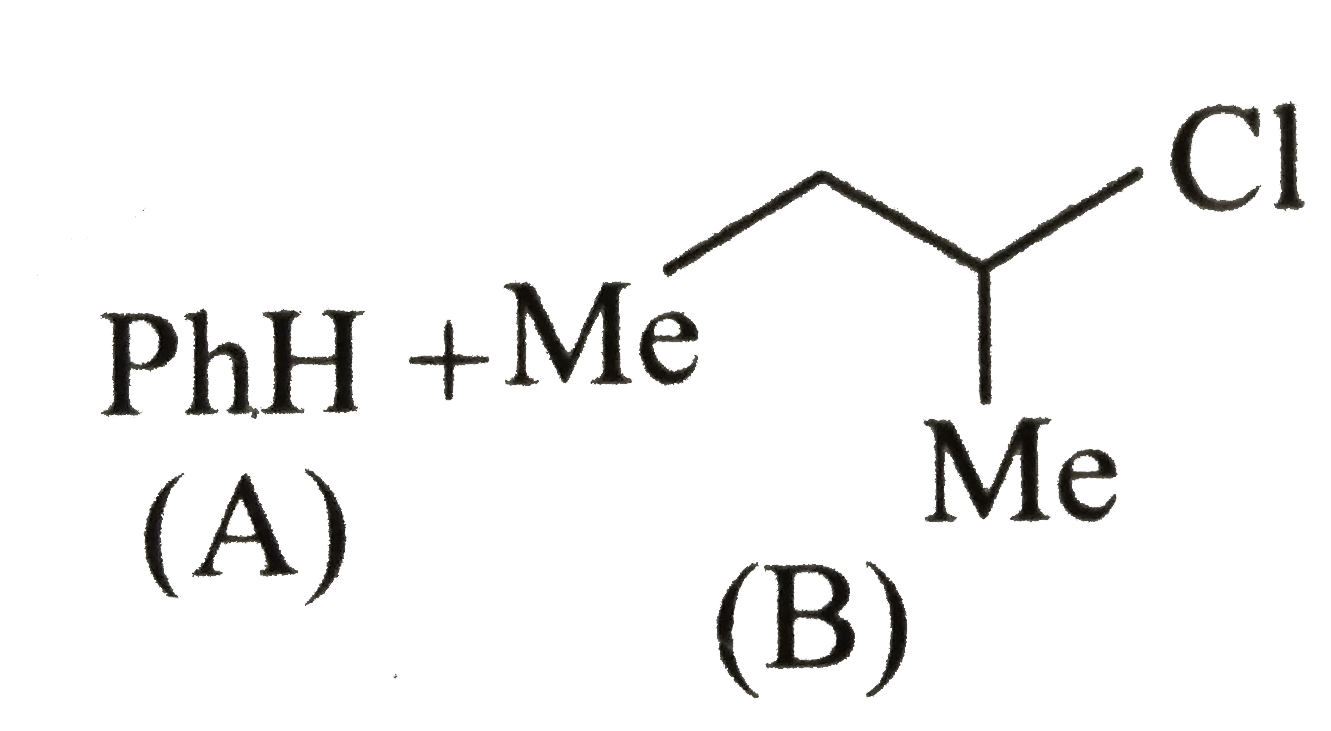
c. PhCH(A)=O+HCN(B)→(C)LAH−−→D
d. PhCH=O(A)+MeNO2(B)ΘOH−−→Fe,FeSO4−−−−−−→H⊕D
e.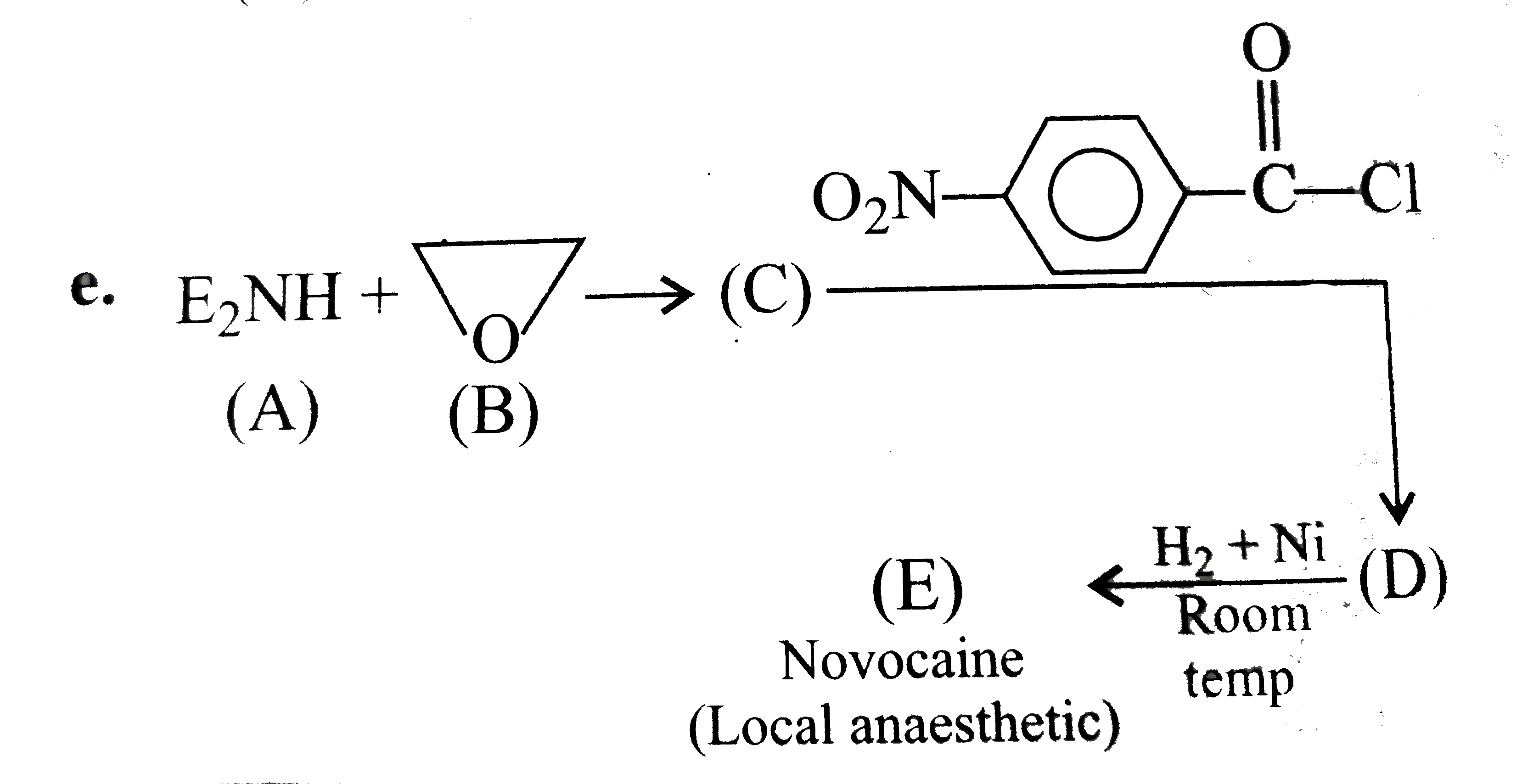
View SolutionComplete the following reactions:
a. (A)Glyoxal1.NaOH−−−−−→2.H3O⊕(B)
b. Glyoxalic acid(A)1.NaOH/Δ−−−−−−−→2.H3O⊕(B)+(C)
c.
d. CHOHCO+ΘOH−−−−−−→(B)HCHO+ΘOH−−−−−−−→(C)+(D)
CHOHCO+ΘOH−−−−−−→(B)HCHO+ΘOH−−−−−−−→(C)+(D)
e.
f.
View SolutionWrite the product ? C6H5COOHSOCl2−−−→(A)Pd/BaSO4−−−−−−→(B)(i)HCN−−−−−−−→(ii)H3O⊕C
View SolutionIn the following sequence of reaction, the product C is
CH3−BrKCN−−→AH2O+−−−→BLiAlH4−−−→EtherC
View Solution




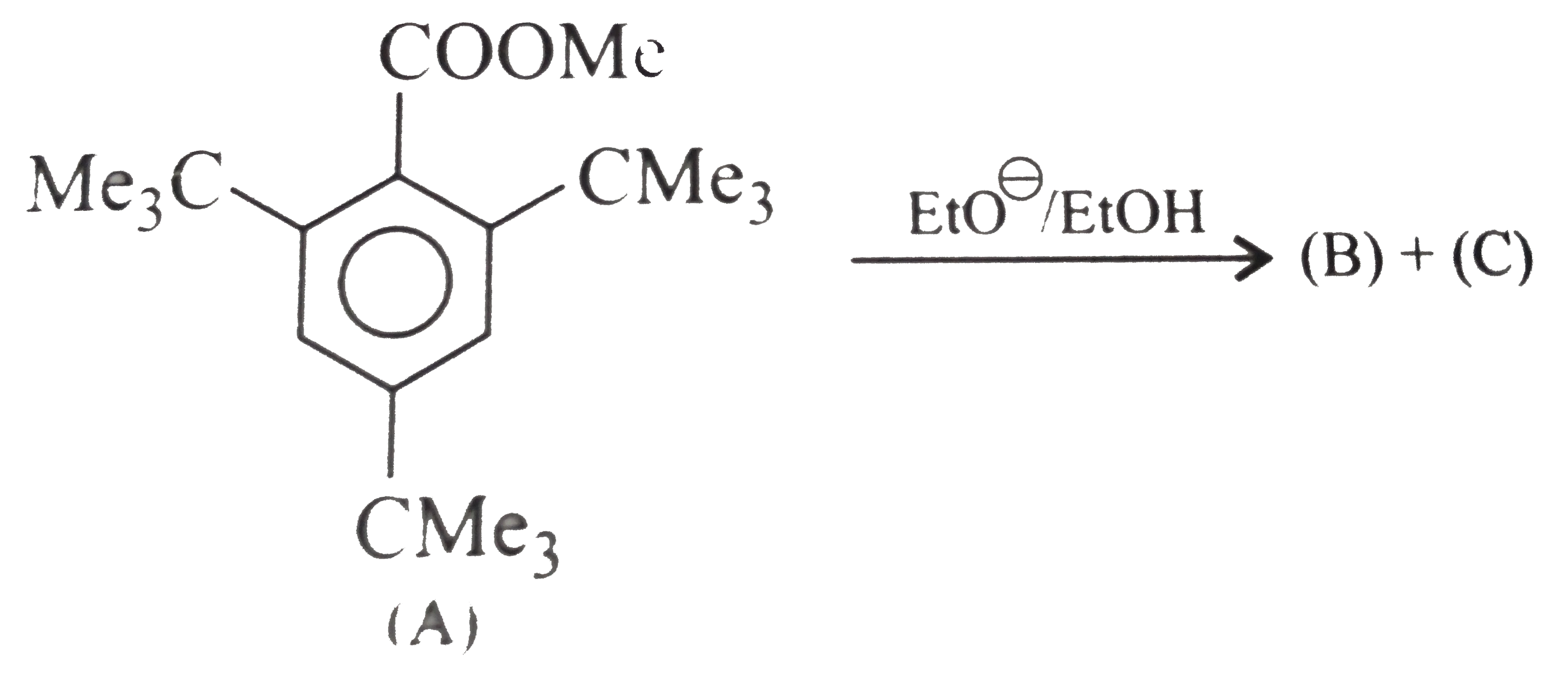
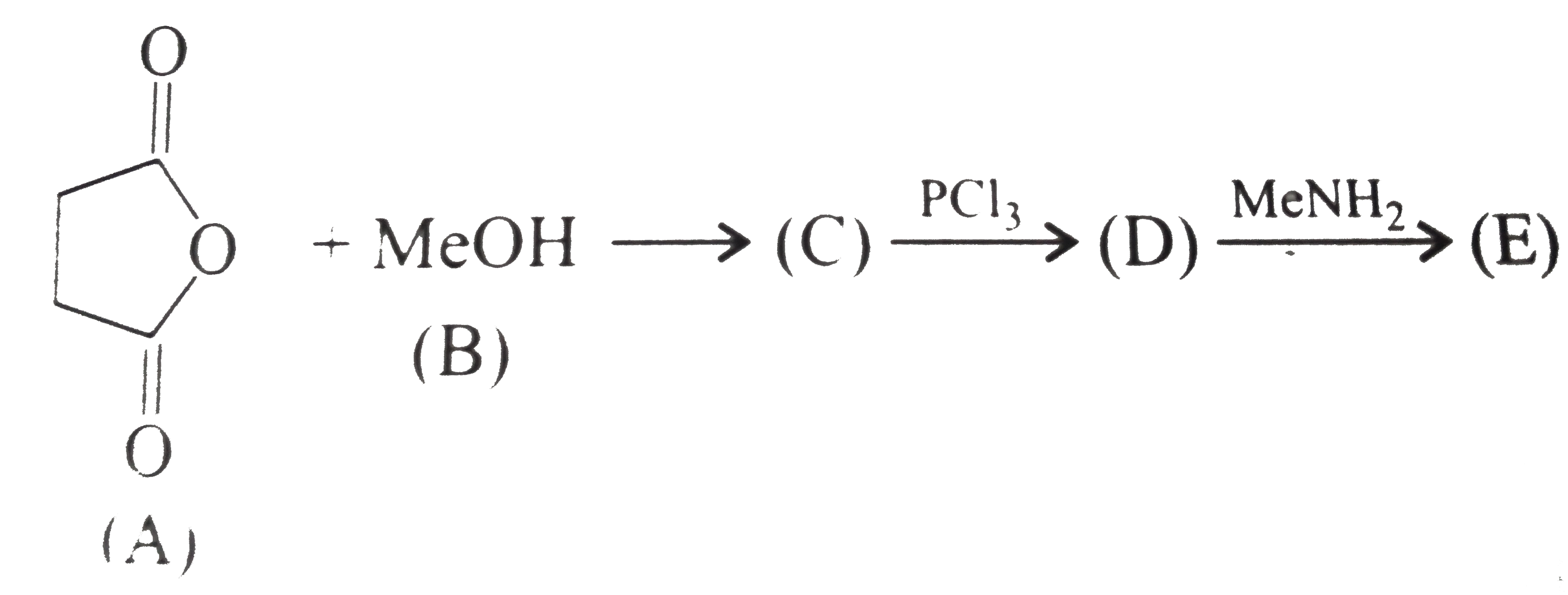
 .
.


